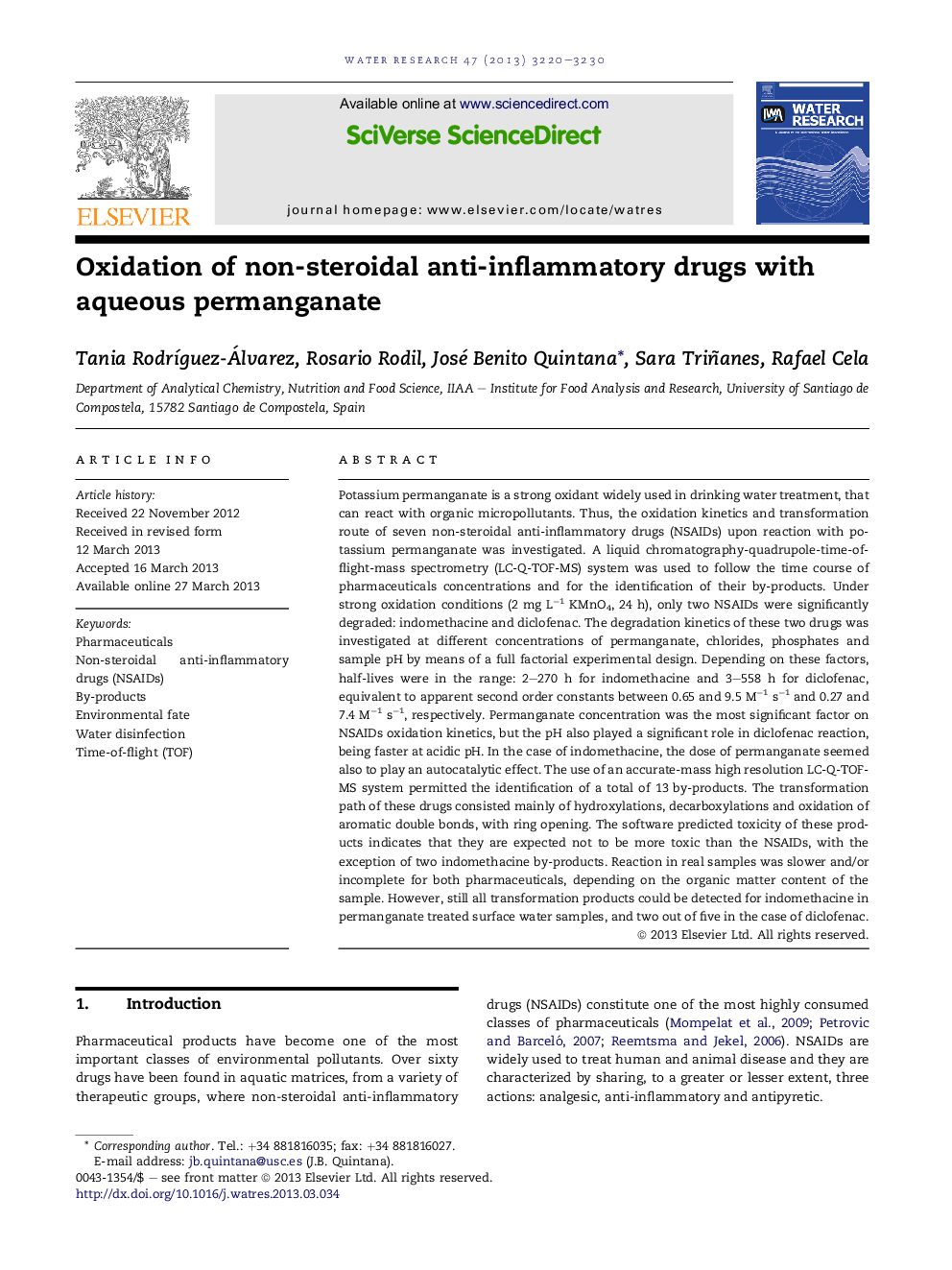| کد مقاله | کد نشریه | سال انتشار | مقاله انگلیسی | نسخه تمام متن |
|---|---|---|---|---|
| 4482137 | 1316848 | 2013 | 11 صفحه PDF | دانلود رایگان |

• From 7 NSAIDs only 2 significantly react with KMnO4: diclofenac and indomethacine.
• Kinetics dominated by oxidant dosage & in the case of diclofenac also pH.
• LC-Q-TOF-MS/MS permitted the identification of 13 transformation products.
• Transformation route proceeds through aromatic ring oxidation and opening.
• Organic matter in real water matrices limits the oxidation reaction potential.
Potassium permanganate is a strong oxidant widely used in drinking water treatment, that can react with organic micropollutants. Thus, the oxidation kinetics and transformation route of seven non-steroidal anti-inflammatory drugs (NSAIDs) upon reaction with potassium permanganate was investigated. A liquid chromatography-quadrupole-time-of-flight-mass spectrometry (LC-Q-TOF-MS) system was used to follow the time course of pharmaceuticals concentrations and for the identification of their by-products. Under strong oxidation conditions (2 mg L−1 KMnO4, 24 h), only two NSAIDs were significantly degraded: indomethacine and diclofenac. The degradation kinetics of these two drugs was investigated at different concentrations of permanganate, chlorides, phosphates and sample pH by means of a full factorial experimental design. Depending on these factors, half-lives were in the range: 2–270 h for indomethacine and 3–558 h for diclofenac, equivalent to apparent second order constants between 0.65 and 9.5 M−1 s−1 and 0.27 and 7.4 M−1 s−1, respectively. Permanganate concentration was the most significant factor on NSAIDs oxidation kinetics, but the pH also played a significant role in diclofenac reaction, being faster at acidic pH. In the case of indomethacine, the dose of permanganate seemed also to play an autocatalytic effect. The use of an accurate-mass high resolution LC-Q-TOF-MS system permitted the identification of a total of 13 by-products. The transformation path of these drugs consisted mainly of hydroxylations, decarboxylations and oxidation of aromatic double bonds, with ring opening. The software predicted toxicity of these products indicates that they are expected not to be more toxic than the NSAIDs, with the exception of two indomethacine by-products. Reaction in real samples was slower and/or incomplete for both pharmaceuticals, depending on the organic matter content of the sample. However, still all transformation products could be detected for indomethacine in permanganate treated surface water samples, and two out of five in the case of diclofenac.
Figure optionsDownload high-quality image (151 K)Download as PowerPoint slide
Journal: Water Research - Volume 47, Issue 9, 1 June 2013, Pages 3220–3230